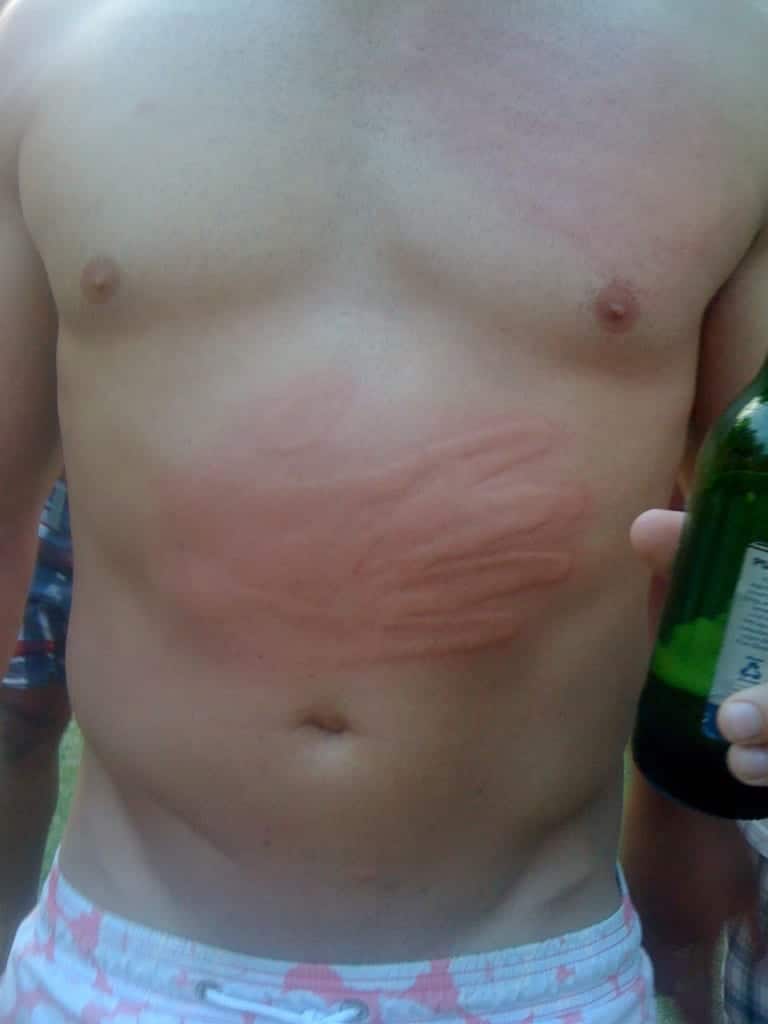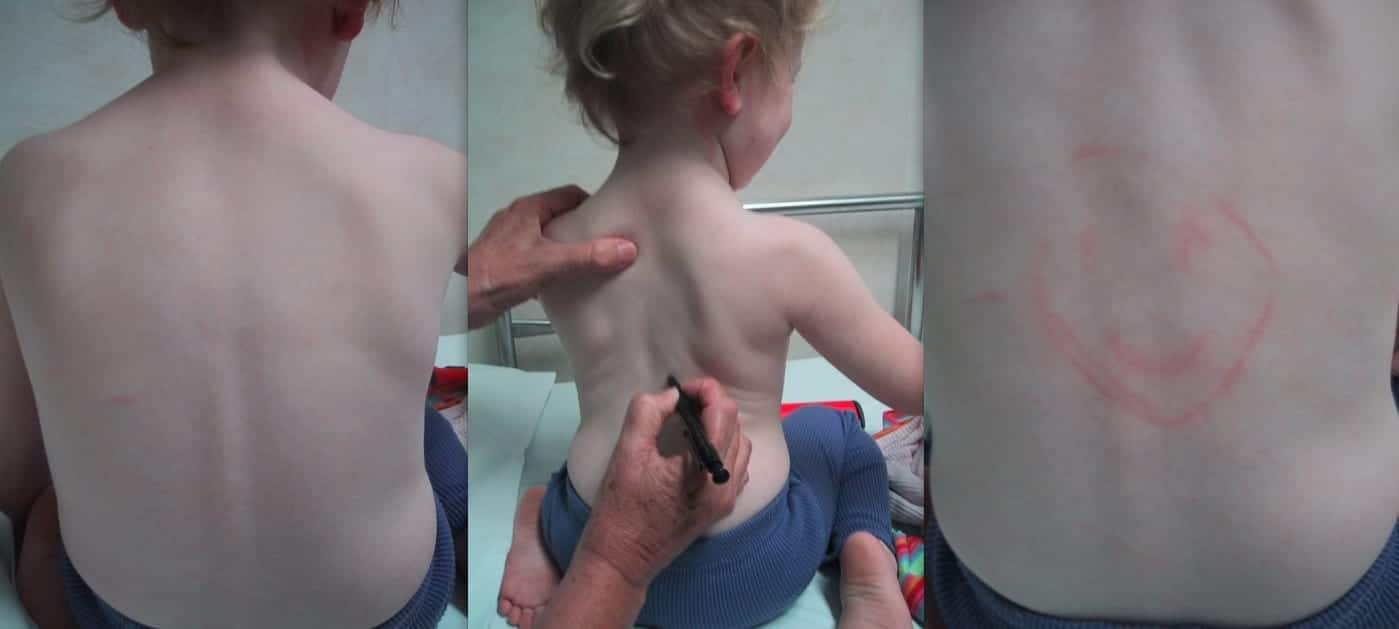Palmaris slapus abdominus
The world of urticarial pathophysiology and dermal manifestations of allergy and urticaria has always fascinated me – although I have found that clinically defining some of the finer sub-divisions allergic and non-allergic urticarias can be a little taxing (see causes mnemonic FIT MID CHIMP)
To add more confusion to the mix, I thought I might introduce some images from recent cases of physical urticaria…hoping for some erudite comments from the allergy experts in the readership.
Palmaris slapus abdominus
Recently I treated a patient with alcohol induced Palmaris slapus abdominus.
This rare condition is prevalent amongst athletes, particularly males in their early 20’s playing rugby at an elite level. Predisposing factors include significant anaerobic exercise (e.g. Super XV match); ethanol imbibing (e.g. post match beers) and the close presence of an immediate personal physical threat (e.g. prop forward).
The condition was treated symptomatically by avoidance of provocative stimuli (removing the subject from the immediate physical threat) and the administration of 10mg loratadine (non-sedating anti-histamine).
This phenomenon appears to be a variant of immediate pressure non-allergic urticaria. However, the precise classification of this urticarial manifestation is uncertain as it falls within the realms of dermatographic, cholinergic and pressure induced urticaria.
Hopefully more team victories will allow for further study and evaluation of this phenomenon.
Physical urticaria
A proportion of patients with chronic urticaria have physical urticaria, i.e. urticaria incited by a physical stimulus such as cold, vibration, or pressure.
- Pressure urticaria – an uncommon form of physical urticaria which may occur immediately (within minutes) after a pressure stimulus; however, more commonly, pressure urticaria develops after a delay of 4-6 hours after a pressure stimulus. Wheals last for 8-72 hours with the hands, feet, trunk, buttocks, legs, and face are the most common areas affected. Lesions can be induced by a variety of stimuli, including standing, walking, wearing of tight clothes, or sitting on a hard surface.
- Dermatographic urticaria – one of the most common types of urticaria, in which the skin becomes raised and inflamed when stroked, scratched, rubbed, and sometimes even slapped. Firm stroking of the skin produces an initial red line (capillary dilatation), followed by an axon-reflex flare with broadening erythema (arteriolar dilatation) and the formation of a linear wheal (transudation of fluid/edema) termed the triple response of Lewis. The exaggerated response to constitutional whealing tendency occurs in 2-5% of the population and is termed dermographism.
Additional testing needs to be done to formally classify Palmaris Slapus Abdominus into the correct sub-classification of physical urticaria. Options for further stimulus testing have been provided by @DrVes of AllergyCases.org and include
- Dermographism: Stroking with narrow object, e.g. a tongue depressor (see below)
- Cold urticaria: ice cube test
- Heat urticaria: test tube water at 44°C (111°F)
- Pressure urticaria: Sandbag test or a bag with heavy books
- Vibratory urticaria: vibration with laboratory vortex for four minutes
- Cholinergic urticaria: exercise for 20 mins or leg immersion in 44°C (111°F) bath
- Aquagenic urticaria: challenge with tap water at various temperatures
It is of interest that testing of the subjects children revealed an increased propensity towards dermographism…


